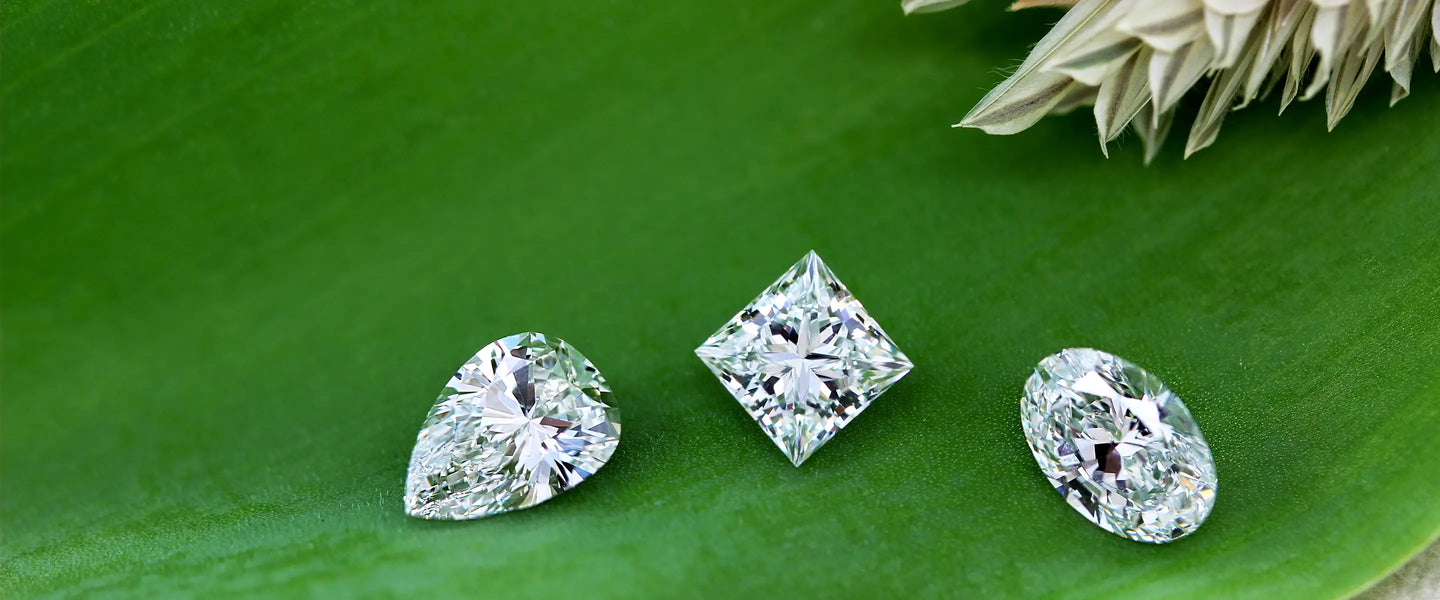When it comes to purchasing a diamond, whether natural or lab diamonds 4Cs are essential for making an informed decision. These four factors—cut, color, clarity, and carat weight—determine the quality and value of the diamond. In this article, we will delve into each of these elements as they pertain to lab diamonds.
Table of Contents
Cut: The Heart of Lab Diamonds
The cut of a diamond is arguably the most important of the 4Cs. It affects how light interacts with the stone, influencing its brilliance and overall appearance. For lab diamonds, cut grades range from Excellent to Poor. A well-cut lab diamond reflects light beautifully, creating a captivating sparkle. When choosing a lab diamond, consider opting for one with an Excellent or Very Good cut to ensure the best visual appeal.
Color: The Palette of Lab Diamonds
The color of a diamond refers to the absence of color, with the ideal being completely colorless. In lab diamonds, the color grading system follows a similar scale to natural diamonds, ranging from D (colorless) to Z (light yellow or brown). Most consumers prefer lab diamonds in the D to H range for a classic look. Understanding the color grading of lab diamonds can help you select a stone that meets your aesthetic preferences without sacrificing quality.
Clarity: The Purity of Lab Diamonds
Clarity measures the presence of internal or external flaws, known as inclusions and blemishes, respectively. Lab diamonds often boast higher clarity grades compared to natural diamonds due to the controlled environment in which they are created. Clarity grades range from Flawless (no inclusions visible under 10x magnification) to Included (inclusions visible to the naked eye). For those seeking the best value, a lab diamond with a clarity grade of VS1 or VS2 offers an excellent balance of quality and affordability.
Carat Weight: The Size of Lab Diamonds
Carat weight indicates the size of the diamond, and it is an essential factor for many buyers. One carat equals 200 milligrams, and lab diamonds can be found in various carat sizes. While larger diamonds tend to attract more attention, the carat weight must be balanced with the other 3Cs for optimal value. When selecting a lab diamond, consider your budget and preferences; sometimes, opting for a slightly smaller carat can allow for a higher quality cut, color, or clarity.
The Importance of Certification for Lab Diamonds
When purchasing a lab diamond, always look for certification from reputable gemological laboratories such as the GIA (Gemological Institute of America) or IGI (International Gemological Institute). A certification provides an unbiased assessment of the diamond’s 4Cs, ensuring you understand the quality of your purchase. This documentation is particularly crucial for lab diamonds, as it assures you that the stone has been accurately graded according to industry standards.
Lab Diamonds vs. Natural Diamonds: A Comparative Analysis
Understanding the differences between lab diamonds and natural diamonds can further inform your decision-making process. While both types of diamonds are graded using the 4Cs, lab diamonds are typically more affordable and available in a wider range of sizes and qualities. The ethical considerations surrounding lab diamonds also appeal to many consumers, as they are created without the environmental and humanitarian concerns associated with some natural diamond mining practices.
Making the Right Choice with Lab Diamonds
Choosing a lab diamond can be an exciting yet daunting process. With the man made diamonds, you can confidently navigate the options available to you. Take your time to assess each of these criteria, keeping in mind your personal style and budget. Whether you prioritize cut for brilliance, color for aesthetic appeal, clarity for purity, or carat weight for size, the right lab diamond is out there waiting for you.
Conclusion: Finding Your Perfect Lab Diamond
In conclusion, the 4Cs—cut, color, clarity, and carat weight—are pivotal in understanding the quality and value of lab diamonds. By taking these factors into account, you can make an educated choice that aligns with your preferences and budget. As lab diamonds continue to grow in popularity, they offer a modern and ethical alternative to traditional diamonds. Embrace the beauty of lab diamonds and find the perfect stone that symbolizes your unique love story.







